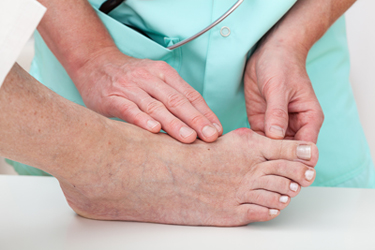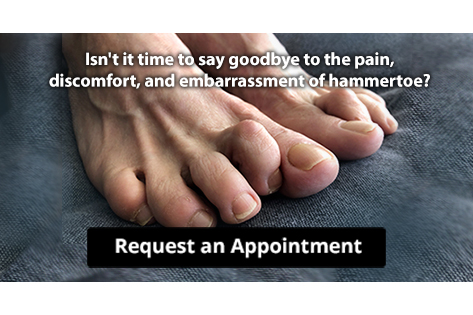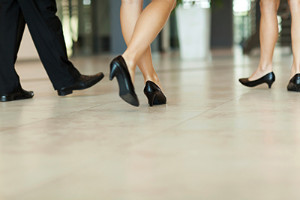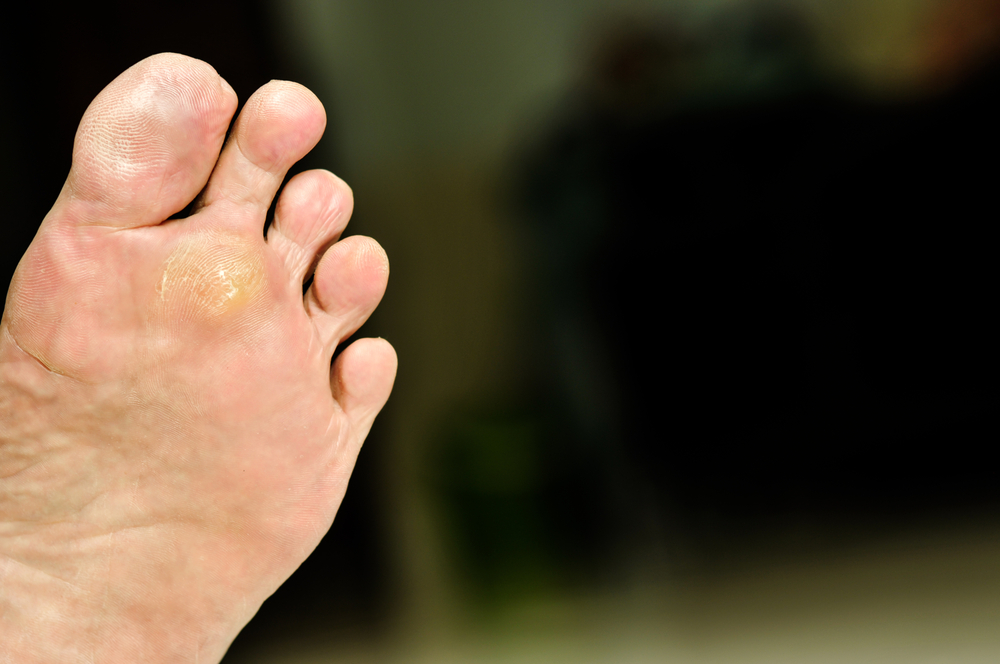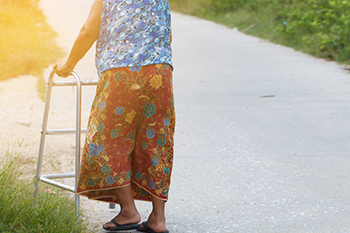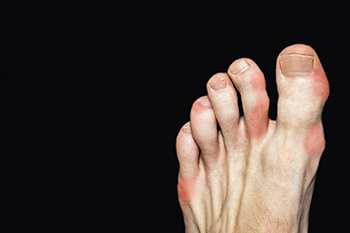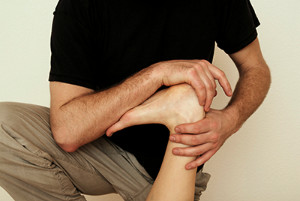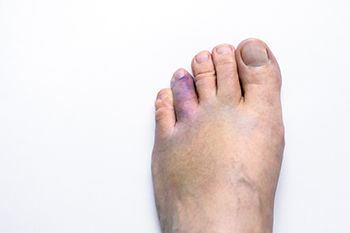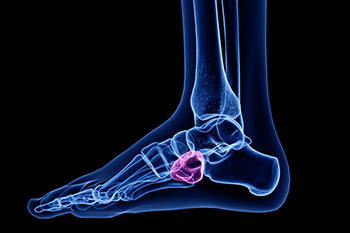
People who have pain on the outside of their ankle may have cuboid syndrome. This ailment is defined as the cuboid bone moving outward while the heel bone moves inward. It is a foot condition that can be caused by twisting the ankle or from stepping off of a curb in the wrong way unexpectedly. It may also develop from running on hard or uneven surfaces or from wearing shoes that do not provide adequate support. The pain may increase when body weight is put on that side of the foot and may radiate to the other areas of the foot. Additional symptoms can consist of a reduced range of motion in the ankle and surrounding areas, and the toes may feel weak that are closest to the injury. Some patients may alter their gait, or walking style, to accommodate the pain by limping or swaying from side to side. If you have pain in this part of your foot, it is suggested that you speak with a podiatrist who can confirm cuboid syndrome and offer correct treatment options.
Cuboid syndrome, also known as cuboid subluxation, occurs when the joints and ligaments near the cuboid bone in the foot become torn. If you have cuboid syndrome, consult with one of our podiatrists from Carolina Foot & Ankle Specialists. Our doctors will assess your condition and provide you with quality foot and ankle treatment.
Cuboid syndrome is a common cause of lateral foot pain, which is pain on the outside of the foot. The condition may happen suddenly due to an ankle sprain, or it may develop slowly overtime from repetitive tension through the bone and surrounding structures.
Causes
The most common causes of cuboid syndrome include:
- Injury – The most common cause of this ailment is an ankle sprain.
- Repetitive Strain – Tension placed through the peroneus longus muscle from repetitive activities such as jumping and running may cause excessive traction on the bone causing it to sublux.
- Altered Foot Biomechanics – Most people suffering from cuboid subluxation have flat feet.
Symptoms
A common symptom of cuboid syndrome is pain along the outside of the foot which can be felt in the ankle and toes. This pain may create walking difficulties and may cause those with the condition to walk with a limp.
Diagnosis
Diagnosis of cuboid syndrome is often difficult, and it is often misdiagnosed. X-rays, MRIs and CT scans often fail to properly show the cuboid subluxation. Although there isn’t a specific test used to diagnose cuboid syndrome, your podiatrist will usually check if pain is felt while pressing firmly on the cuboid bone of your foot.
Treatment
Just as the range of causes varies widely, so do treatments. Some more common treatments are ice therapy, rest, exercise, taping, and orthotics.
If you have any questions, please feel free to contact our offices located in Mount Pleasant and Charleston, SC . We offer the newest diagnostic and treatment technologies for all your foot care needs.
